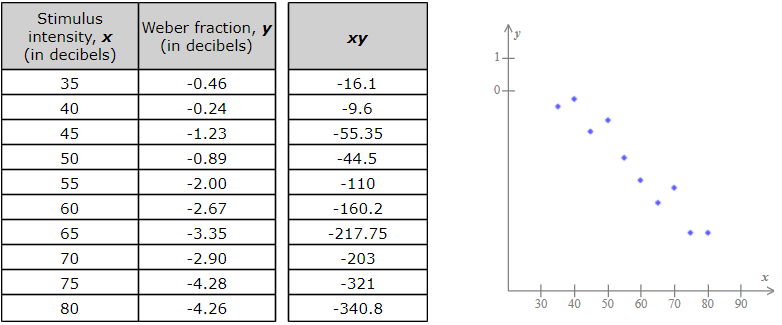Question
Weber's law, a concept taught in most Introduction to Psychology courses, states that the ratio of the intensity of a stimulus to the just noticeable
Weber's law, a concept taught in most Introduction to Psychology courses, states that the ratio of the intensity of a stimulus to the "just noticeable" increment in intensity is constant, that is, the ratio doesn't depend on the intensity of the stimulus. The ratio is called the "Weber fraction," so a concise statement of Weber's law is that "the Weber fraction is constant, regardless of the stimulus intensity." It turns out that Weber's law is not so much a law as it is a rule of thumb, since it is violated in many situations. For instance, for some auditory stimuli, the Weber fraction does depend systematically on the stimulus intensity. The following bivariate data are the experimental data obtained for one listener in an auditory intensity discrimination task. For each of the ten stimulus intensitiesx (in decibels), the Weber fractiony (in decibels) is shown. Below is a scatter plot of the data. Also given are the products of the stimulus intensities and Weber fractions for each of the ten stimuli. (These products, written in the column labelled "xy," may aid in calculations.)

Step by Step Solution
There are 3 Steps involved in it
Step: 1

Get Instant Access to Expert-Tailored Solutions
See step-by-step solutions with expert insights and AI powered tools for academic success
Step: 2

Step: 3

Ace Your Homework with AI
Get the answers you need in no time with our AI-driven, step-by-step assistance
Get Started


